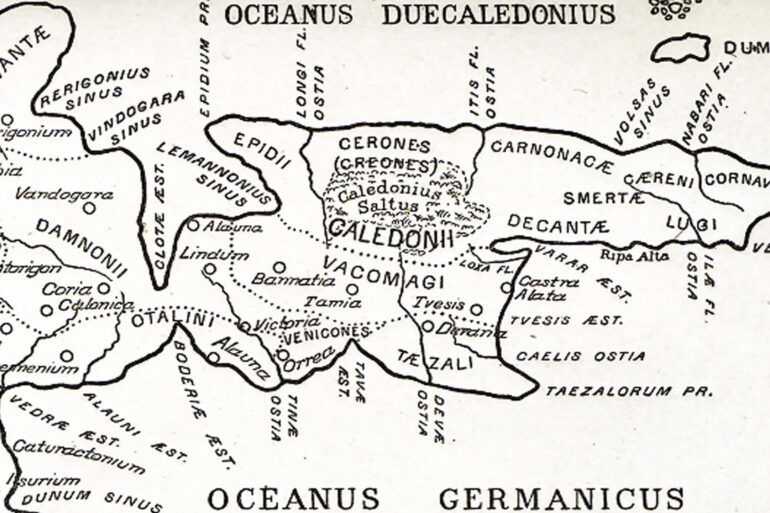What do you know of the Romans in Renfrewshire? Do you believe the stories of a Roman fort at Castlehead and Oakshaw? Did you know that the terminus of Rome’s north western frontier terminated near Bishopton?
The presence of the Romans in Paisley and Renfrewshire has always been a bone of contention. Writers in 18th and 19th Century placed a roman fort on Oakshaw at the site of the John Neilston Institute, based on Ptolemy’s map of Scotland assuming that the placename ’Vandogora’ was Paisley. Today this theory is discounted, and it is believed at Vandogora now relates to Loundoun Hill in Ayrshire and Oakshaw and Castlehead were more likely to be native Iron Age Hillforts, similar to hillfort at Walls Hill above Johnstone.
When early historians wrote the histories of Renfrewshire & Paisley, two main Roman forts of Renfrewshire had not been discovered. Whitemoss fort was discovered in 1949 through an examination of aerial photographs of the Bishopton area to solve a long-term mystery about the apparent weakness of the western end of the Antonine Wall. Again in 1953 a second fort on Barochan Hill was discovered on aerial photographs. Today nothing is visible above ground for the two forts, but they can still be seen on aerial or satellite photographs.
Excavations in 1972 at Barochan Hill showed that the fort dated to the Flavian period that stretched between 69AD and 96AD which indicates that it would have been constructed and occupied during Rome’s first campaign in Scotland under Gnaeus Julius Agricola. The fort covered an area 160m E-W and 90m N-S, around 3.55 acres in size. The excavations produced numerous artifacts including Roman pottery including the remains of 51 samian ware vessels, glass and copper alloy nails.
The fort at Whitemoss, was dated to two time periods 141-155AD and 158-188, which dates its construction to the same period as the Antonine Wall on the northern side of the Clyde Estuary. The dating of Whitemoss comes from pottery found at the site. Whitemoss or Bishopton fort as it is sometimes referred to, covered an area of 4 acres and is directly opposite Duntochar Fort on the Antonine Wall. From Duntochar Fort, Whitemoss and the earlier Barochan Hill Fort are both clearly visible. All though the Antonine Wall terminated at Old Kilpatrick to the north of the Clyde, Whitemoss Fort became the terminus of Antonine’s frontier at the west, essentially protecting the Clyde estuary form attack.
Although Barochan and Whitemoss Forts have not been subjected to extensive excavation (such as Vindolanda on Hadrian’s Wall) there is no doubt that these forts were Rome’s foothold in Renfrewshire in the first and second centuries, both playing their part in the defence of the north western frontier.
